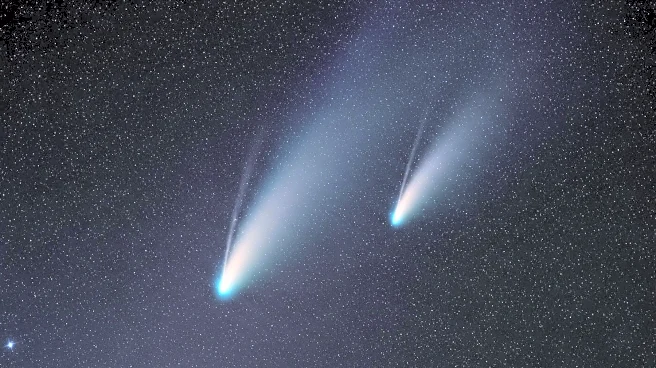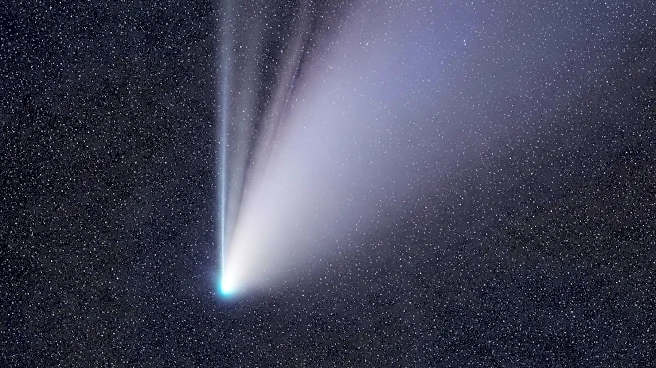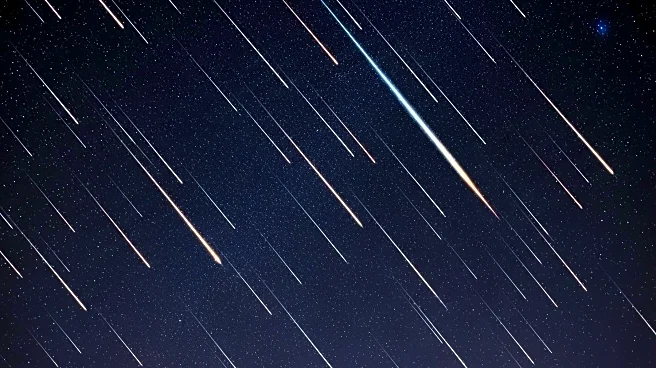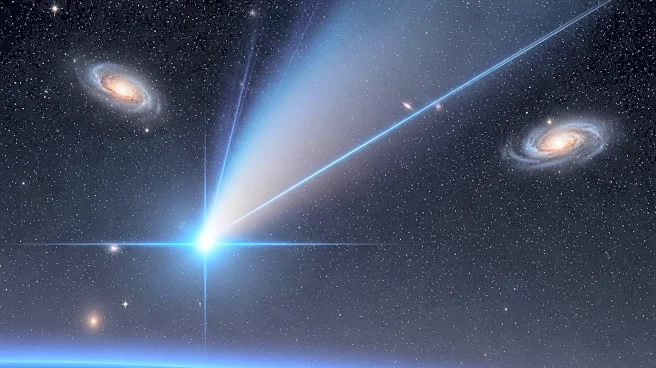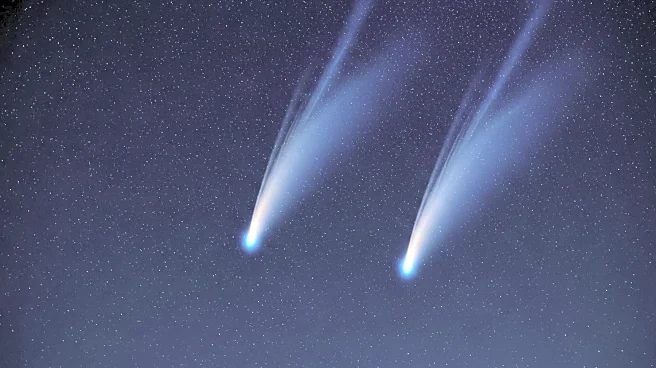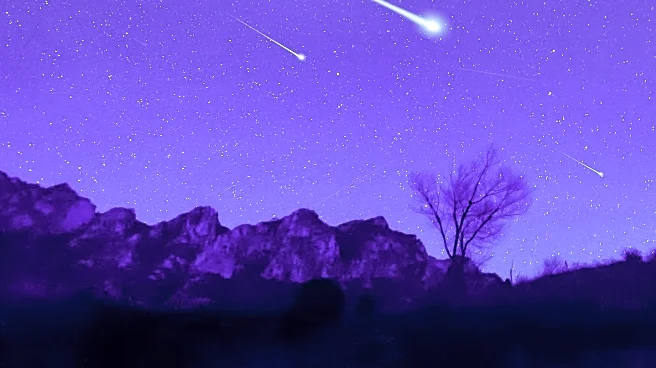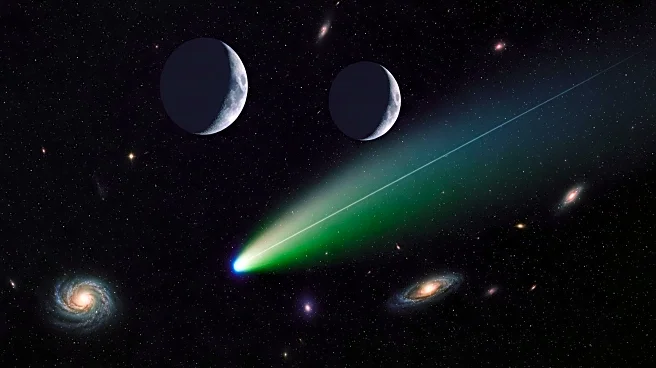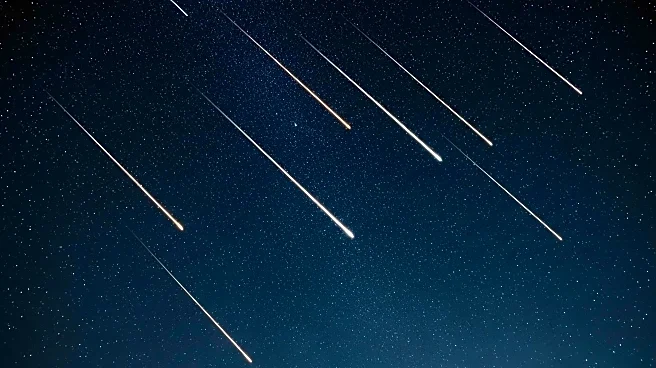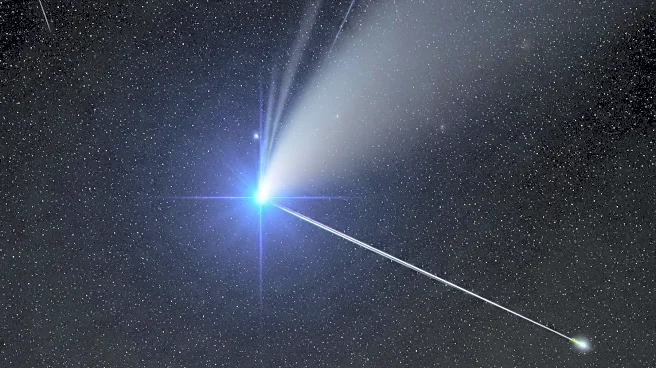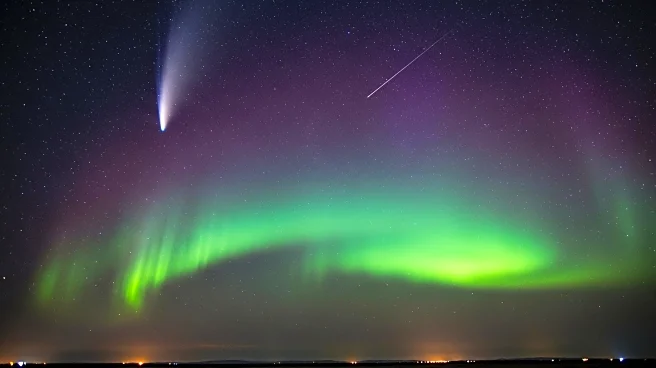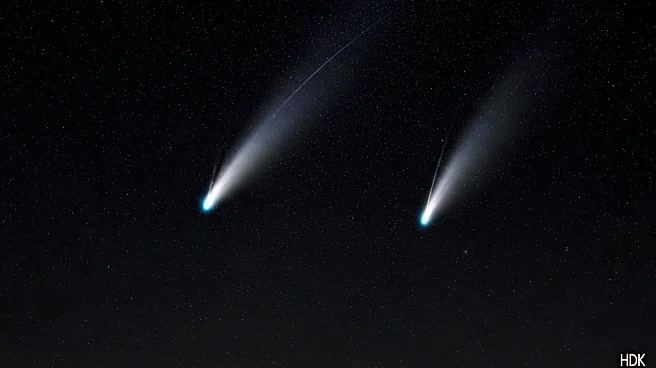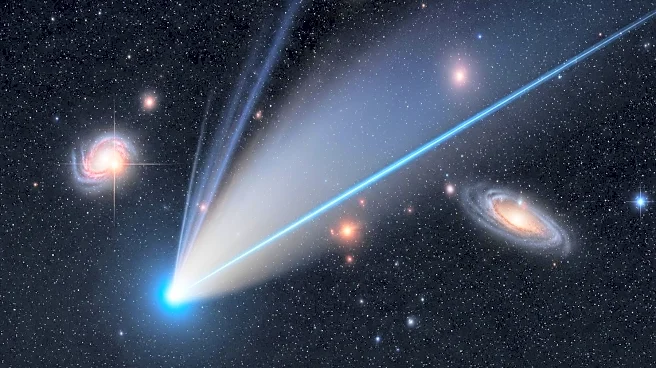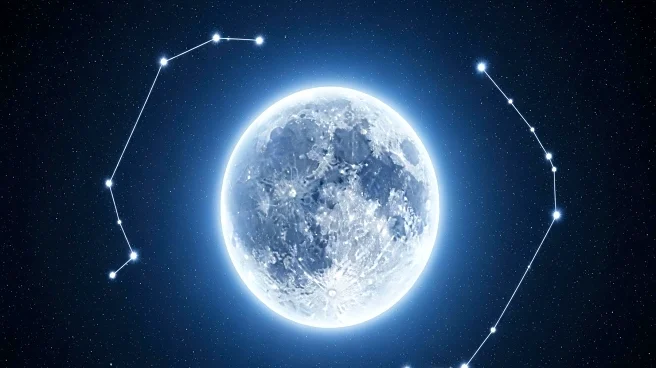What is the story about?
What's Happening?
In October 2025, two newly discovered comets, C/2025 A6 (Lemmon) and C/2025 R2 (SWAN), will be visible in the night sky, offering a rare opportunity for stargazers. Comet Lemmon, discovered in January 2025, is expected to reach a brightness of magnitude 4 by late October, making it faintly visible to the naked eye. It will be closest to Earth on October 21, 2025, at approximately 50 million miles away. Comet SWAN, discovered in September 2025, will make its closest approach to Earth around October 20, 2025, at about 25 million miles distance, peaking near magnitude 6. Observers in the Northern Hemisphere will have the best view of Comet Lemmon, while Comet SWAN will be visible in the western evening sky.
Why It's Important?
The simultaneous visibility of two comets is a rare astronomical event, providing a unique opportunity for amateur astronomers and the public to observe celestial phenomena. This event coincides with the Orionid meteor shower, enhancing the stargazing experience. The appearance of these comets can inspire interest in astronomy and science, potentially leading to increased public engagement and educational activities. Additionally, the event highlights the importance of space observation and the role of technology in discovering and tracking celestial objects.
What's Next?
Stargazers are encouraged to find dark sites away from city lights to maximize visibility of the comets. The best viewing times are mid-to-late October, with Comet Lemmon appearing in the northwest sky after sunset and Comet SWAN climbing higher each night. Observers may use binoculars or telescopes to enhance their viewing experience. The Orionid meteor shower, peaking on October 21-22, will provide additional opportunities for observing shooting stars. As the comets approach their closest points to Earth, astronomers will continue to monitor their brightness and trajectory.
Beyond the Headlines
The appearance of these comets underscores the unpredictability of celestial events, as comets can change brightness unexpectedly. This event serves as a reminder of the vastness and complexity of the solar system, with comets originating from distant regions like the Oort Cloud. The discovery and observation of comets contribute to our understanding of the solar system's formation and evolution, offering insights into the composition and behavior of these icy bodies.
AI Generated Content
Do you find this article useful?
